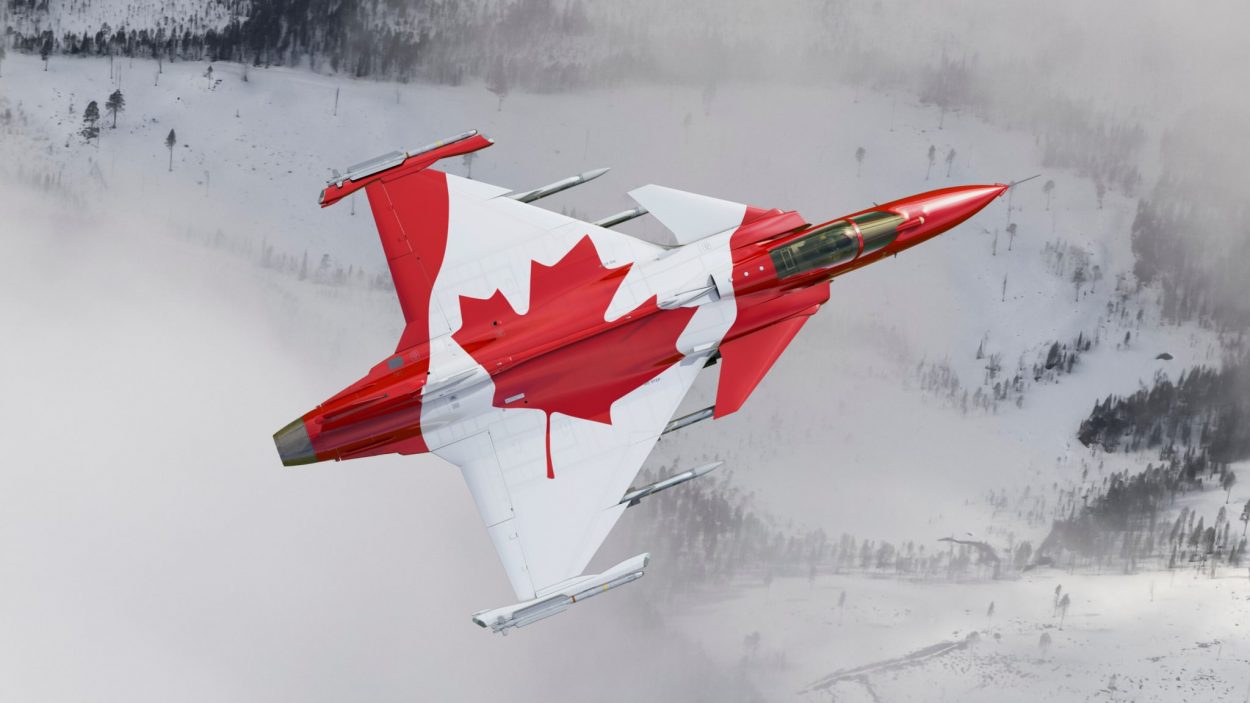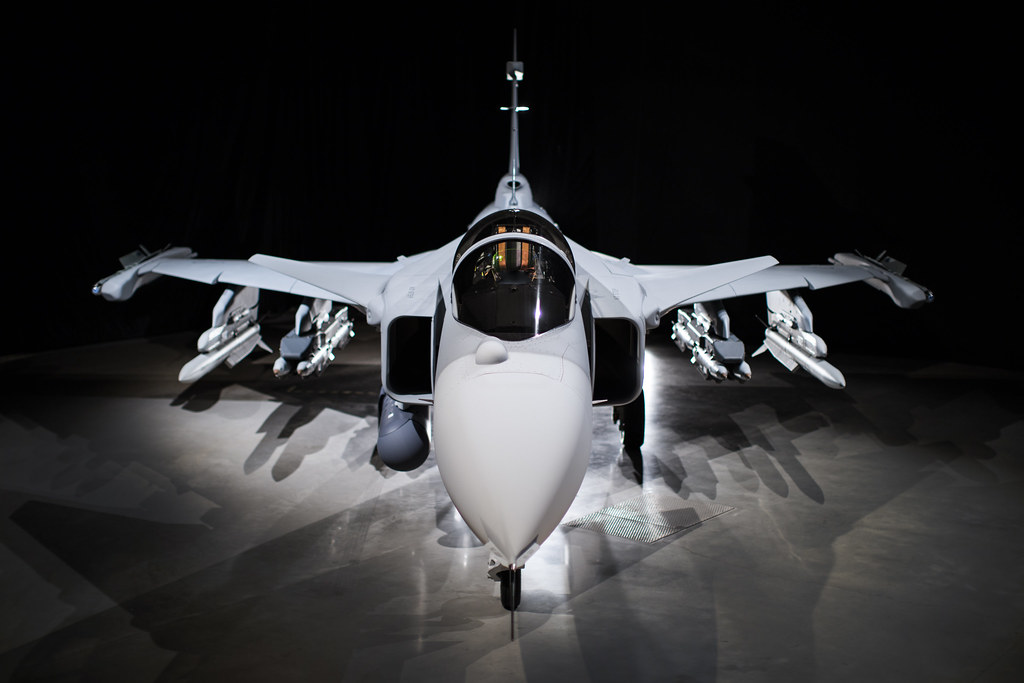The Thai Air Force’s likely decision to choose the Gripen-E fighter jet marks a significant shift for Swedish manufacturer Saab as it moves away from being overshadowed by US defense giant Lockheed Martin and securing a new contract—its first in almost a decade.
‘Raptor Salad’ For Lunch! US F-22 Raptor Outgunned, Outmaneuvered By German Eurofighter Typhoon?
The Royal Thai Air Force (RTAF) has reportedly decided to acquire Saab’s Gripen-E fighters to fulfill its need for a squadron of new fighter aircraft. On July 14, an RTAF spokesperson announced that the Thai government had just received a recommendation to purchase the Gripen-E.
“The procurement is in process [but is] dependent on the government,” the spokesperson said. In essence, this indicates that while the service recommended the Gripen, the final decision on the acquisition of the aircraft was with the government.
The spokesperson told Janes that the program would move ahead only after receiving budgetary permissions and assessments from the Thai government. At the time of publishing this report, Saab had yet to comment on the RTAF’s choice of Gripen-E aircraft.
The “fighter replacement project” is scheduled to run from 2025 to 2034 and involves the purchase of 12-14 aircraft together with associated armament systems, ground support equipment, and training, according to the RTAF’s White Paper, released in February.
Due to financial limitations, the RTAF will probably try to acquire four aircraft in the first round, which is expected to cost roughly THB19 billion (USD 539 million). The remaining airframes will likely be acquired later in the decade.
The RTAF has been assessing the Gripen-E and Lockheed Martin’s F-16 Fighting Falcon Block 70/72 to phase out the aging F-16A/B aircraft currently operated by the service. The jets are fourth-generation aircraft believed to be well-suited for small air forces that do not require expensive stealth jets like the F-35 Lightning II.
If the Thai government finally takes the RTAF’s recommendation and locks the Gripen-E for procurement, it would be the first sale of Saab’s most advanced aircraft in almost a decade.
More importantly, it will be a rare instance of Lockheed tasting defeat after clinching several fighter jet contracts in the last couple of years, often at the expense of the SAAB Gripen. A majority of the deals that Lockheed won were for F-35 stealth fighters.
UK-Backed Saab Close To Beating Lockheed
A potential agreement with Thailand would infuse new life into the Gripen-E jets as Saab has been looking for potential customers for its most advanced fighters, albeit with little success. The last triumph for the Gripen fighter occurred in 2014 when Brazil entered a US$5.4 billion deal for 36 Swedish-made fighters.
Earlier this year, Hungary indicated its interest in buying the Gripen-E fighter but a deal has not been sealed yet.
The deal with Brazil essentially marked the last success in an overseas competition for Saab. The Swedish airframer had seen success when it exported the Gripen to Hungary, the Czech Republic, South Africa, and Thailand.
It was followed by a long period of missed opportunities and a waning international presence as rivals like the US’s F-35 and the French Rafale continued to dominate the market despite the Gripen-E being positioned as a cost-effective combat aircraft.
Saab Gripen has been repeatedly overshadowed by the American fifth-generation fighter, the F-35 Lightning II, which has now become the fighter jet of choice for Europe, especially in the wake of the Ukraine invasion.
This trend was demonstrated by the decision made by countries like Finland, Switzerland, Canada, and the Czech Republic to replace their outdated fighter jet fleets with F-35s rather than Saab Gripens. The decision was made despite talks in favor of Gripen in the advanced stages.
Saab’s frustration was apparent when Canada opted for the Lockheed Martin aircraft in March 2022. Saab’s President and CEO, Micael Johansson, expressed dismay at the persistent lack of export success for the Gripen fighter jet. At that time, Saab also asserted that the success of Lockheed fighters over other contenders was largely due to America’s political influence.

Interestingly, even Thailand initially wanted to acquire the F-35 Lightning II aircraft despite having an inventory of Gripens and F-16. However, Washington turned down the request due to a lack of necessary infrastructure, safety assurances, and operational capabilities, including airbase safety, maintenance, and trained pilots.
Instead, the United States pitched the Lockheed Martin F-16 Block 70, the most advanced variant of the Fighting Falcon, to Thailand. Nevertheless, with the British backing the Gripen for the RTAF contract, the US appeared desperate and presented a more “sweetened” deal to Thailand last month.
The United Kingdom strongly supports the sale of the Gripen-E to Thailand. Saab announced on March 20 that the UK government supported the proposal to sell the Gripen fighters to RTAF.
Thai Defense Minister Sutin Klungsang announced on July 4 that the US Ambassador to Thailand had presented the country with a loan proposal to enable the Air Force to purchase additional F-16 fighter jets. The offer, however, carried a hefty interest rate.
The Ambassador also reportedly assured that the F-16s could be included in the Air Force’s data connection system and that Washington was prepared to provide the maintenance technology the Air Force needed.
The Thai Defense Minister also informed the media, “They said their jets are superior to other jets in terms of advancements and capacity and are the most suitable choice at present.” The US Ambassador purportedly offered assurances to sweeten a potential purchase for the Thai administration since the Thai government had been assessing the feasibility of acquiring the Gripen-E.
If Lockheed Martin loses the contract, it may be the Swedish manufacturer’s first win in almost a decade.


